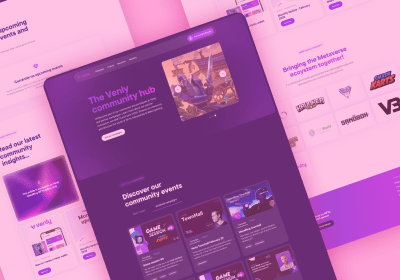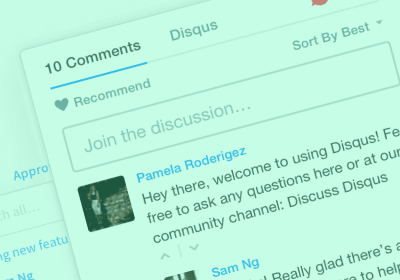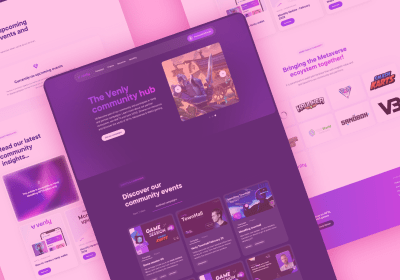
Why A Design System Is The Superior Web Agency PM Tool

Modern work has only grown bigger and more layered. It’s why you find more project management tools online now than ever before. Companies need a way to help manage, streamline and automate their teams’ work activities. Understandably, they’re on an endless quest to ensure more collaboration and better performance.

In fact, project management may be the most important aspect of work for web agencies and other companies. And now, a variety of shared, online tools boost project management in the cloud, using no-code technology. Their goal is simplifying work organization to drive faster collaboration and better results. Still, as we’ll see, what a company does and how they get it done are often two very different things.
But how do some of these cloud PM tools work? And how do they compare to a design system for creative web development agencies? Does a project management app really help a company improve and streamline work to achieve better results? And could these sort of simpler project management applications also help web design agencies work faster to be more competitive?
We’ll provide an overview of a few of these popular PM tools in the cloud, namely Basecamp and Asana. Comparing the main features and benefits of a web agency design system, we’ll determine which one best helps web development agencies. The ultimate goal is to streamline and complete web design projects faster and more competitively.
Want to know more about SiteManager? Try it here!
Complex Teamwork Needs Project Management
This is true anywhere. Getting work done in teams requires good management. Now, you can find many project management tools in the cloud promising to help you do this. These cloud apps or tools can organize planning around a project. This helps better track and manage your progress in a team effort. It can potentially eliminate unnecessary steps and streamline work resources to accomplish more project goals faster when fully adopted.

For example, a widget manufacturer relies on a shared project management tool. They’re looking to track a new widget rollout among production and marketing teams. Using this shared cloud PM tool, both teams can agree on the planned product rollout in advance. They can set the steps needed, then assign tasks and responsibilities. They can also set up process checks and dependencies and stay in touch in one place at every step in the project.
With a visibly structured project plan, these two widget factory teams are more likely to work quickly and smoothly to achieve their goals. The new widget rollout is much more likely to happen on time and with fewer bumps in the road. The defining factor here is streamlining project plans, details and conversations logically in one shared, central place. Notice, however, the widget company’s product and their process plan are two separate items. What if you can combine these for other businesses working with complex, collaborative projects like web design agencies do?
Professional Web Design Employs Specialized Teams
Unique and original web design work is also complex, layered and collaborative. Building a new website from concept to pixels requires many expert hands in the mix. Even further, a specific set of skilled steps must take place for the web design to look great, work well, and finish fast.

Web design is a lot like baking bread. Making a great, tasty loaf requires skilled knowledge and a specific process. You need a set of steps carefully laid out in a timed sequence. If you knead your dough too much or too little, skip an ingredient, or let it sit outside the oven too long, your results are wildly unpredictable or bad. When your bread-making steps are missing or out of order, you get a terrible loaf of bread as a result.
Unless you’re lucky, your bread will come out unpredictably without a good recipe or specialized knowledge. Most likely, it will be tough as a brick, flat, tasteless, or just inedible. In most cases, you’ll need to completely redo your bread - all due to a broken process. In the end, without a good process, your loaf takes many more resources to accomplish. You end up doubling down on time, labour, and materials: more flour, yeast, water, salt, and heat.
As with bread baking, it pays to follow a great web design process to get fast, outstanding results every time. So, clearly, web design can also benefit from robust project management in the cloud. But can general industry PM apps accomplish this for companies and web agencies alike?
Project Management Tools Organize Shared Work Plans Online
Project management tools in the cloud share many similarities to a design system. They both tie together teamwork and activity inside a set of shared project modules: both enable shared updates, shared project information, and highly visible reminders and timelines.
These help to keep everyone connected in one place, on the same page, and working collaboratively. They also give people the flexibility to work from anywhere at any time. This ensures project work stays on track both inside and out of the office.

Project management tools help centralize and streamline our modern work, which is complex and fragmented. Web innovation has only increased our tech complexity. So, modern companies benefit a ton from any system enabling better teamwork and communication. Cloud apps like Asana and Basecamp provide just that, each one with a different style.
Basecamp And Asana Unify Shared Project Teams
Asana and Basecamp promise to organize work for teams to work better together and get more things done. They achieve this by organizing and keeping everything together in one place, as a single project source of truth. They offer an array of visually appealing, modular designs, no-code, colourful and clean point-and-click features.
Team members can own different parts of their project and process management. Different views and flows organize project info into lists, boards, comments- even communications like emails, chats, calendars and more. These features gather team communication on a project while storing all files and items together in one shared place.

Basecamp and Asana also help automate routine work. Rules, reminders, to-do’s, schedules, and recurring tasks help save time. They enable integrations with other team tools to unify and streamline project details and team processes further. Both provide reporting features so teams and managers can stay on track.
Basecamp and Asana bring people together into a shared, digital co-working space to better communicate and plan. They empower teams to work more visibly and sync together. Coworkers can update and share all project details inside a tailored PM system.

Asana and Basecamp are great no-code collaboration PM tools for work planning, execution, and tracking with all these useful features. They’re great at streamlining a team’s effort with process planning and overview. They even add workforce assessment and management tasks.
The catch is you still need to do all these shared work updates, in addition to the actual project work. In other words, the project work itself is not natively provided or hosted inside these handy project management tools. There’s still actual work outside the PM tool once all the cool colourful lists and modules are updated online.

Too Much Project Management Is A Real Thing
Asana and Basecamp’s project management apps are a helpful way to plan work of any kind: product engineering, marketing campaigns, IT support, banking operations... Almost any industry can use these tools to maximize their team impact. They are innately valuable planning tools - but they are also an added layer of external clerical work.
They are indeed smooth, drag-and-drop user interfaces that improve organizational value. The fact remains they’re still a separate tool and process from the actual work being done. PM tools often end up being one more set of work tasks that need active monitoring and updating. Meaning simply more busy work for already busy team members.

While useful for synced and transparent team collaborations, these apps can also add an extra layer of unwelcome manual work to people’s busy days. All these project task updates, ticked boxes, chat reviews, project status reviews, automated questions, lists, boards, and check-ins can start to seem a bit redundant. They’re external to the actual workload, after all, and they can quickly get tiresome.
Yes, they are well organized, intuitive and searchable. But they also risk well-intentioned overuse and possibly even micro-management. Measurement is key to managing, but moderation is usually best. If your PM process has your teams spending most of the day entering manual updates and checking off task boxes, when does your actual project work get done?
Design Systems Empower Native Design Teamwork Online
Design systems are innovatively different from PM tools in the cloud. To be sure, a design system does provide many of the same features and benefits of PM functions in Asana or Basecamp. But it goes way beyond to unify work and communication for a web design team smoothly. Inside its lean and appealing visual structure, work modules cater to your web design agency's main specialized skill sets: project management, code, design, and content.

A design system offers the same PM features: file storage, shared project guidelines, cloud-hosting, central communications, integrated API tools, and project metrics tracking. But it does a few other things very differently.
In a web design and development agency, your cloud-based web design system IS your work. Boom. And here’s why a design system is better for your web agency than a PM tool...
Web agencies waste little time when working with a design system. There are no fragmented tools or processes. Your agency has a fully integrated, built-in creative web design tool stack, enabling a smoother design workflow with team collaboration. Your actual design work processes all occur inside your design system as organized sets of collaborative flows.
These collaborative workflows are a set of defined, streamlined project work stages in your design system. Actions and workflows such as handovers, comments, reviews, iterations, approvals, and completions. Design systems apply these PM functions directly along with the work to help move along these design workflows as needed.
Here, the added PM work functions of preparation and feedback merge with the agency’s creative functions. Project management merges seamlessly with design, content, and code - enabling project work to flow more efficiently and profitably.
Design Systems Are The Ultimate PM Efficiency Masters
Your design system multiplies time savings many times over. PM functions are directly integrated along with your design work. It also gears all other features specifically for web design and faster iteration. Your team leverages shared and private libraries built on reusable components with atomic design hierarchies and UX / UI guidelines.

These streamlined, intuitive design workflows also clarify the processes and components to save from wasteful re-dos. Automation can further speed up teamwork by suggesting added shortcuts, recommending freelance skill sets, and tracking work metrics. Project management runs through all stages, from planning to development and review.
This is the advantage agencies gain with design systems. It’s a clear efficiency win over other project management tools in the cloud. Regular PM cloud tools stop short at manually shared project documentation and communication layers - remaining outside the actual project work.
Working together, a design system enables accelerated teamwork directly inside the same development processes. It automatically tracks and updates team members’ work as they move through their project assignments and skill-based components. The updates happen along with the work so that only project managers are adding extra updates inside their own work scopes. Everyone else is focused on producing the actual work deliverables and hitting those project deadlines.

Web development work is more complex, specialized, and competitive now than ever before. To avoid slow, broken work tools and processes, this development work requires team collaboration by design. A design-focused system provides a clean, appealing, organized and user-friendly way to organize agency work. It results in agency processes that are leaner and smoother to design faster and better websites.
To schedule a demo and learn how a design system like SiteManager can streamline your web agency workflows, reach us here. We look forward to connecting with you!
Start building today
Streamline your creative process and keep your team aligned with our collaboration tool.




